New to birding? Learn to recognize 15 common backyard birds, and discover ways to attract them to your yard.

15 Common Backyard Birds You Should Know

People love watching birds, there’s no doubt about it. There are 41 million backyard birders in the United States. If you’re ready to give this hobby a try, a good place to start is learning about the birds you’re most likely to spot in your backyard. We’ve rounded up 15 common birds, along with tips on identifying and attracting them.
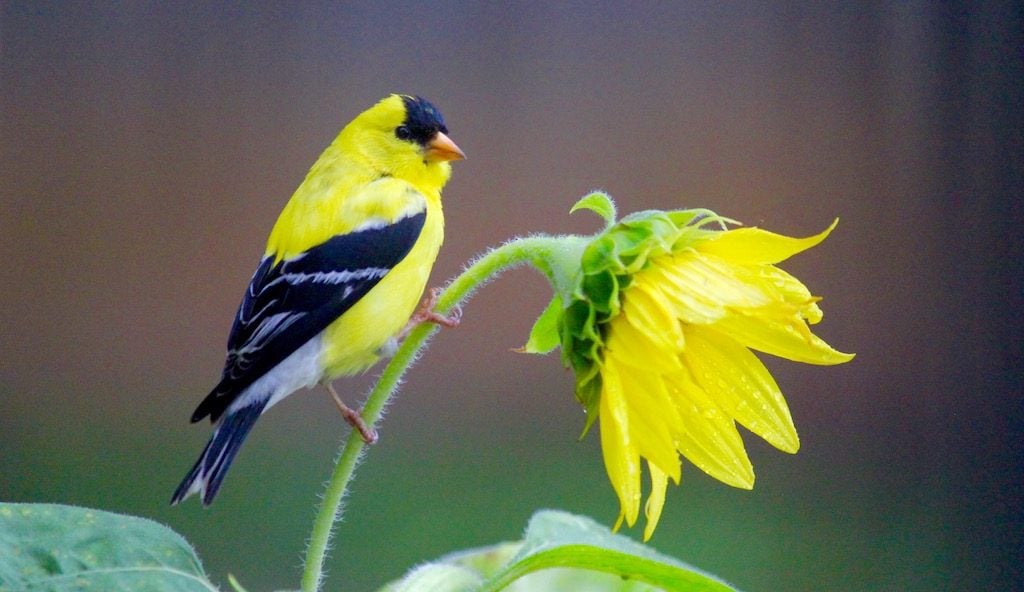
American Goldfinch
Spinus tristis
In the spring and summer, bright yellow-and-black American goldfinches are impossible to miss. To attract more goldfinches, offer thistle feeders. These small birds also love to dine on seeds from plants in the garden. In the winter, their coloration is more muted, but they’re still around and active.
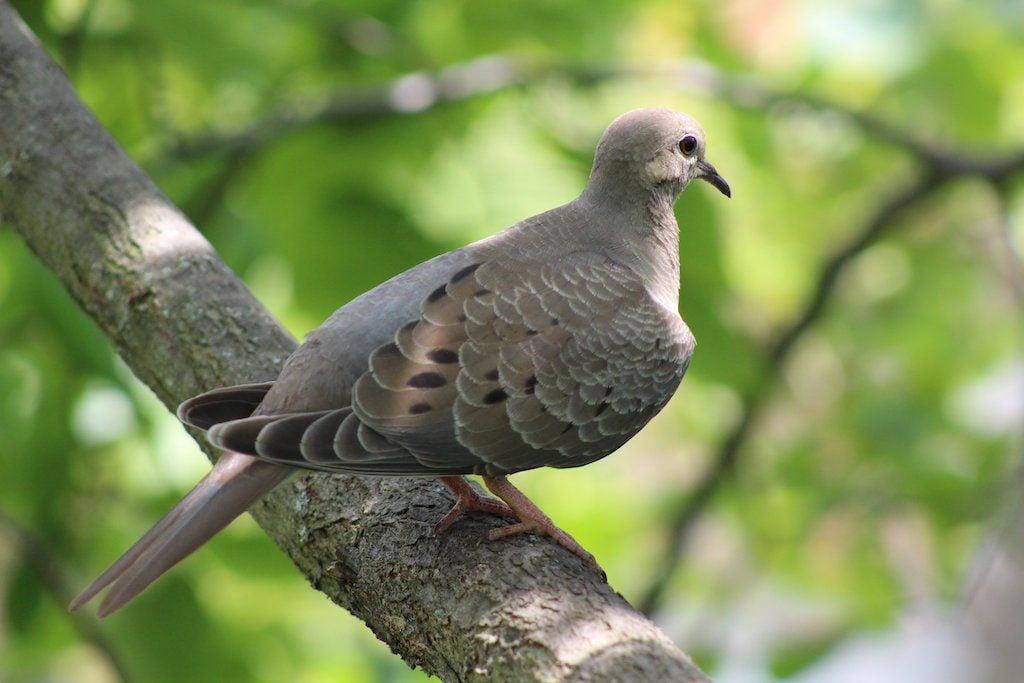
Mourning Dove
Zenaida macroura
These plump gray birds are larger than some of the the other songbirds that visit your feeders. Mourning doves often settle in and eat large amounts of seed, but make up for it with their sweet insistent cooing call. When they fly, their wings make a sharp whistling sound, which is especially noticeable on landing and take-off.
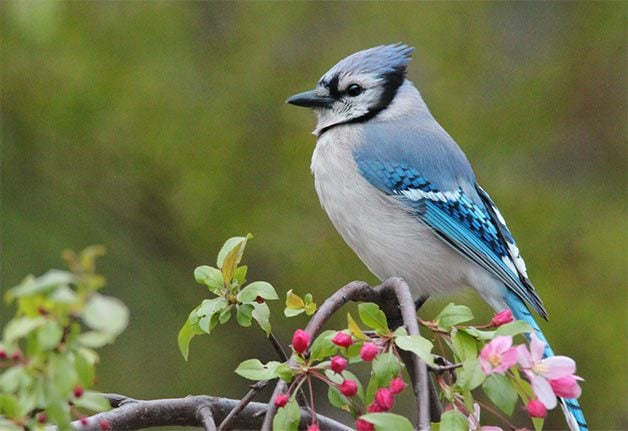
Blue Jay
Cyanocitta cristata
Another large bird, blue jays have somewhat of a bad reputation. They’re sometimes called bully birds for their habit of scaring other birds away from feeders. But these handsome jays are very smart and playful, too. Keep your eye on them, and you may see them toting around shiny objects like bottle caps or foil. To attract blue jays, offer peanuts. In the western U.S. and Canada, blue jays are displaced by Steller’s jays and scrub jays.
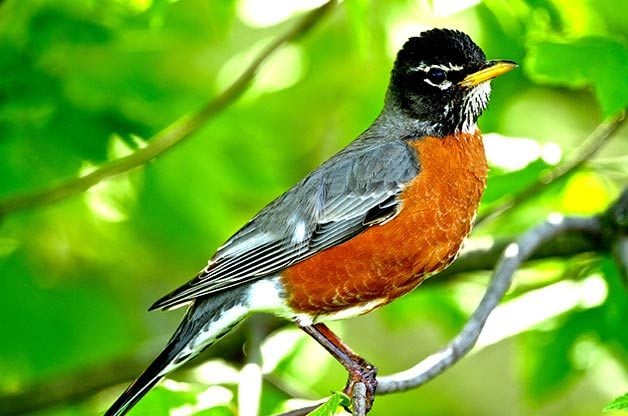
American Robin
Turdus migratorius
Often considered a harbinger of spring, American robins are actually year-round residents in most of the U.S. They eat mainly insects, so in the winter, they disappear into forests where they dig under bark for their meals. As soon as the ground thaws in the spring, they reappear in yards everywhere, foraging for worms and bugs.
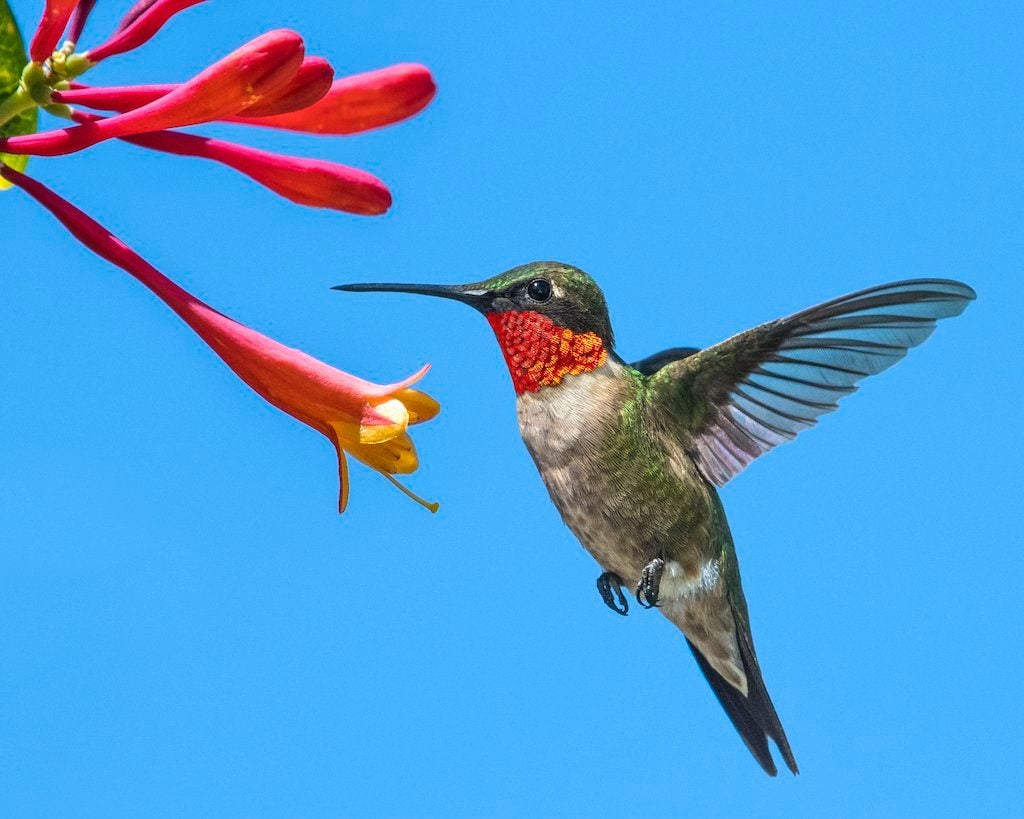
Ruby-Throated Hummingbird
Archilochus colubris
These little sparkling gems are the favorite backyard bird of many, and for good reason. Their ability to hover on wings that move almost too fast to see makes them fascinating to watch. They don’t eat seeds, instead, attract hummingbirds with sugar-water feeders or nectar-producing flowers. In the western U.S., ruby-throated hummingbirds are replaced by Anna’s hummingbirds and rufous hummingbirds.
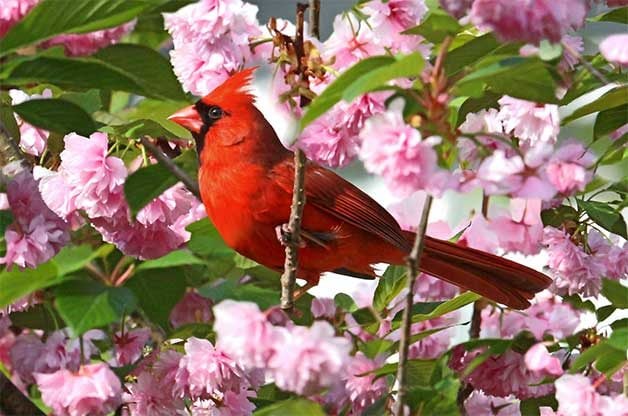
Northern Cardinal
Cardinalis cardinalis
Red northern cardinals, with their perky crests and black eye masks, are easy to identify. Females are a drabber brown, but their matching crests and bright orange bills make them special, too. Their high-pitched chip calls and “what-cheer” songs are also distinctive. Attract more cardinals with their favorite black oil sunflower seed. Oh, and here’s what to know about sunflower seed feeders.
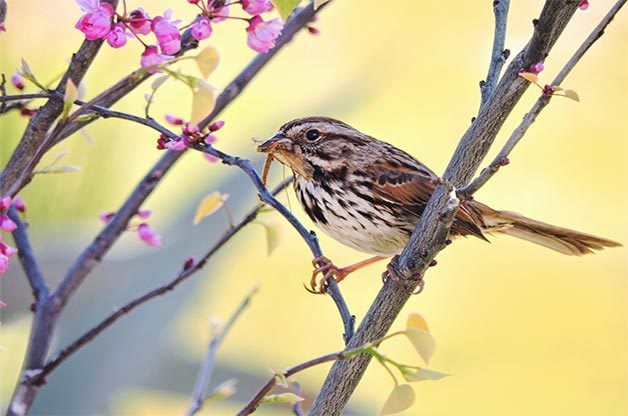
Song Sparrow
Melospiza melodia
Admittedly not the most striking bird in appearance on this list, the song sparrow is so incredibly common it’s worth being able to recognize. They can look quite different in parts of their range. Their songs are sweet, but it’s the obvious “chimp” call that makes this bird easy to identify for beginners.
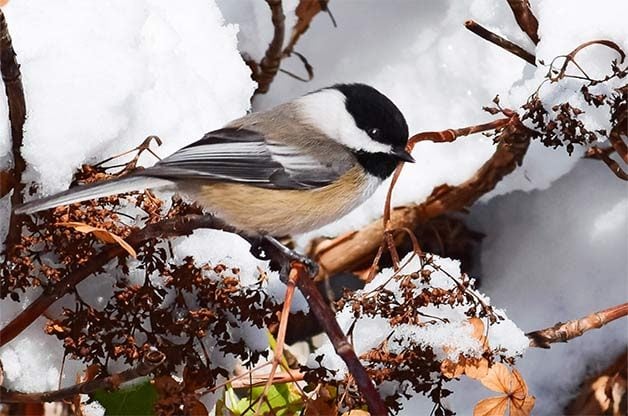
Black-Capped Chickadee
Poecile atricapillus
Ever dreamed of a bird landing and eating seed from your hand? Then you’ll want to get to know the black-capped chickadee! This is one of the friendliest birds in America, and adorable to boot. Their “chickadee-dee-dee” call is one of the first many birders learn to recognize. There are six other chickadee species in North America, and all have winning personalities.
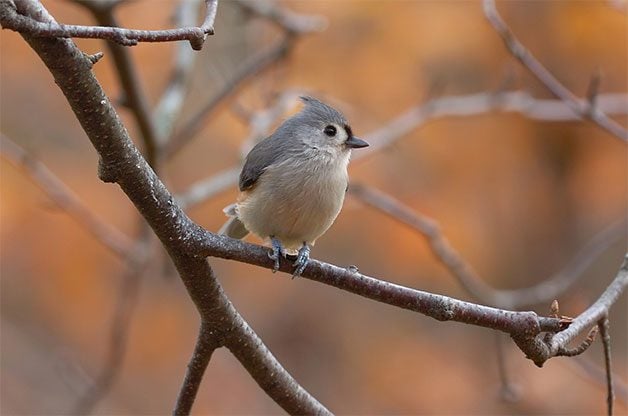
Tufted Titmouse
Baeolophus bicolor
Speaking of cute, check out the tufted titmouse! Gray-backed with a white belly, this bird also boasts flashes of orange and a jaunty crest. Titmice are fun to observe at feeders, as they hold one seed in their feet and pound it open to get the meat within. In fall, watch their hoarding behavior as they store up food for winter.
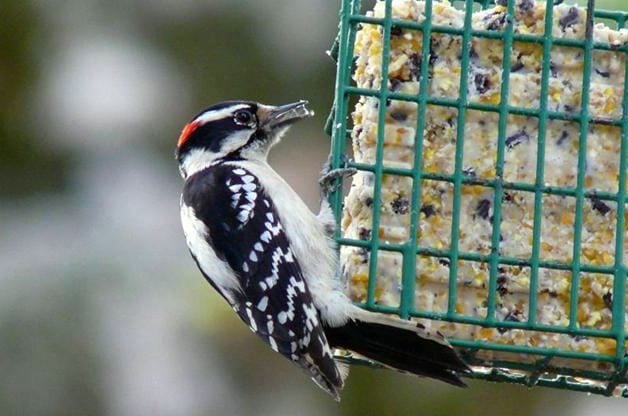
Downy Woodpecker and Hairy Woodpecker
Picoides pubescens / Picoides villosus
One of the first challenges of beginning birders is learning how to tell the difference between the downy woodpecker and hairy woodpecker. Both are small black-and-white birds with red on their heads, and both love to visit suet feeders. Eventually, you’ll learn to look for the shorter beak on downy woodpeckers, but to start, know that the larger birds you see are probably hairy woodpeckers.
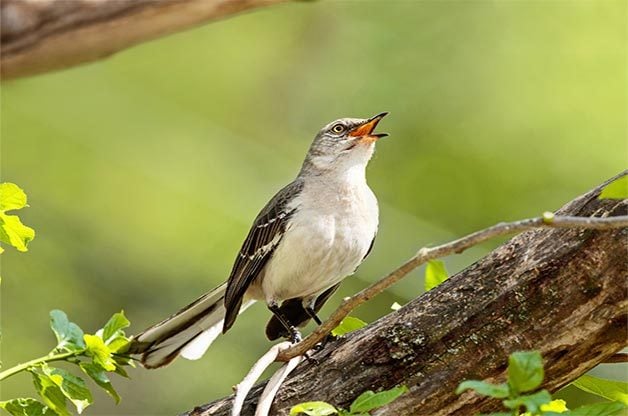
Northern Mockingbird
Mimus polyglottos
The name is no joke — Northern mockingbirds can have a repertoire of more than 100 songs and calls. They mimic other birds, but they also copy car horns and alarms, squeaky doors, and more. They are insect and berry eaters, so you can attract mockingbirds by offering mealworms or planting berry bushes in your yard.
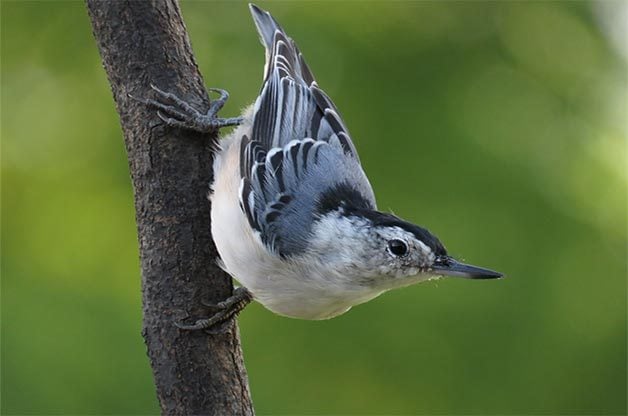
White-Breasted Nuthatch
Sitta carolinensis
White-breasted nuthatches are easy to spot due to their unique habit of hopping around upside-down. They eat just about everything, and have a special love for large seeds like peanuts and acorns. They jam these nuts into tree crevices and whack them to open and pry out the meat. There are three other nuthatch species found in North America, and all of them are amazingly acrobatic.
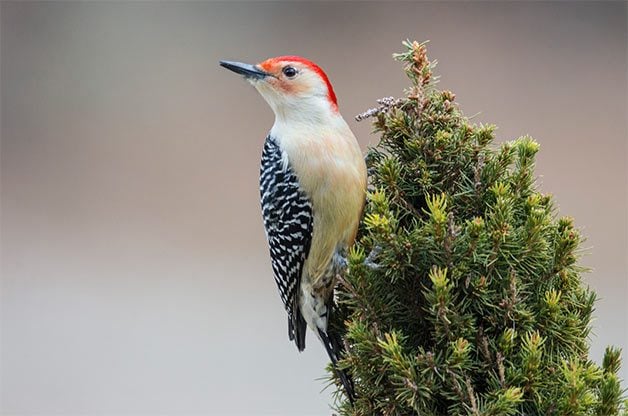
Red-Bellied Woodpecker
Melanerpes carolinus
This is a confusingly-named bird, no doubt about it. The red head markings are much more obvious, but there’s already another bird named the red-headed woodpecker. Instead, this woodpecker takes its name from the faint red markings on its belly. Red-bellied woodpeckers are common in the eastern half of the country. To attract red-bellieds, offer both suet and seed feeders.
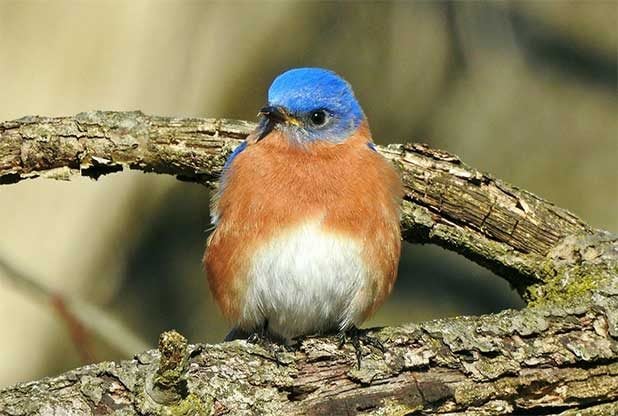
Eastern Bluebird
Sialia sialis
Bluebirds are beloved wherever they’re found. You won’t attract bluebirds with seed feeders; they love insects. You can offer live or dried mealworms to draw them to your yard. They may also choose to nest in your area if you provide the right conditions. Eastern bluebirds are found in the eastern half of the country, as their name suggests. Mountain bluebirds inhabit the Rockies, and western bluebirds fill in the rest of the country.
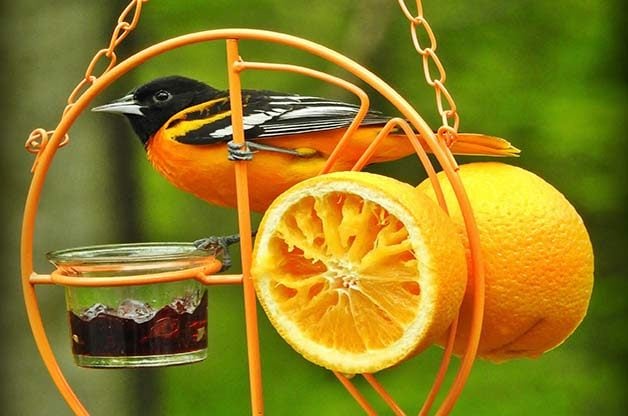
Baltimore Oriole
Icterus galbula
It may take a little extra effort to attract orioles to your yard, but most birders definitely think it’s worth it. These bright orange beauties spend their winters in Central America, so lure them in when they return in spring with their favorite refreshments — oranges and grape jelly. In the western half of the country, Bullock’s orioles replace Baltimore orioles. They also love sweet treats.



















